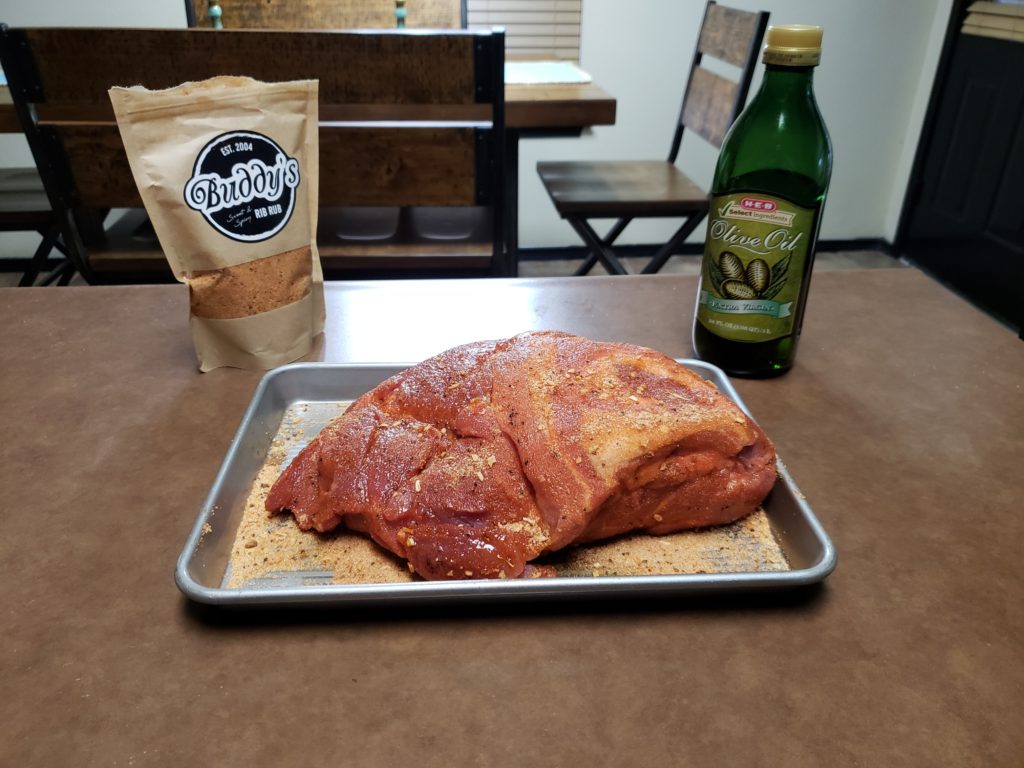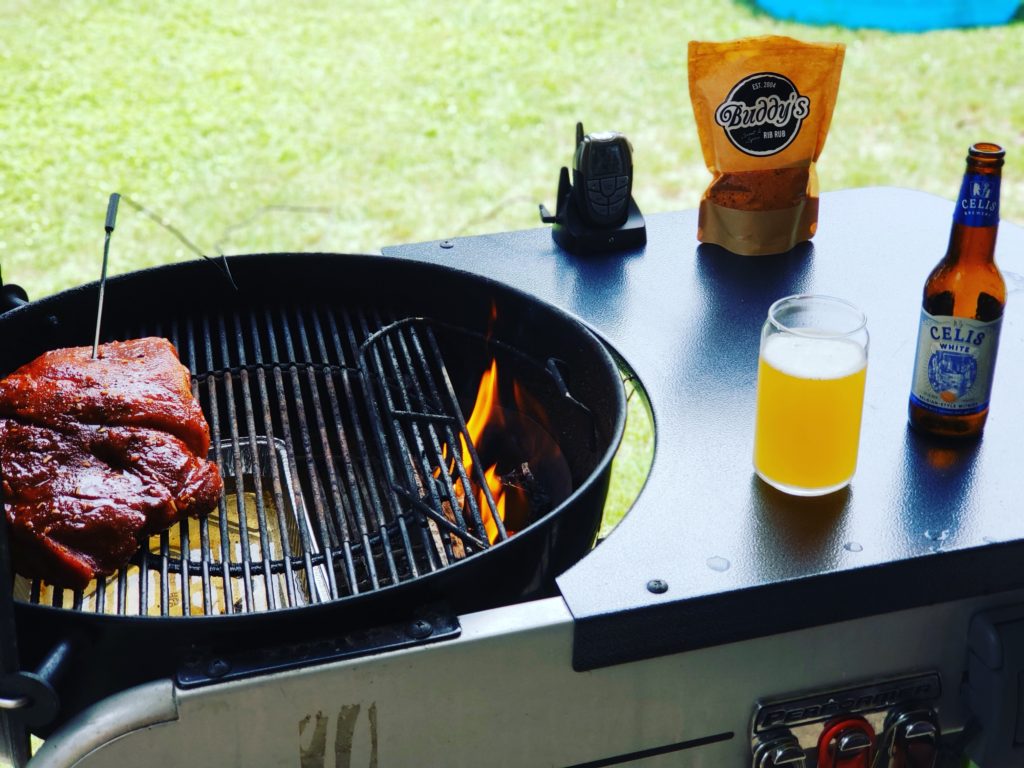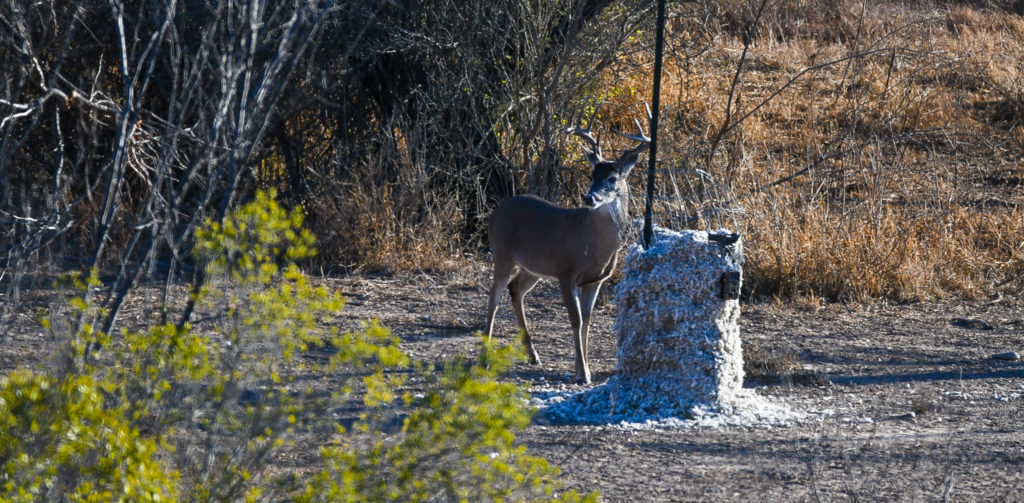Back at it again with my kettle this past weekend. This time I wanted to try something I hadn’t before, so I went with a Boston butt that measured about 4.5 lbs. The nice thing about pork is that’s it’s a fraction of the cost of beef, so I think the entire piece only cost me like eleven dollars.
The plug… Part of the reason I wanted to do pork is because one of my friends, who was a roommate during college, recently started a seasonings business with another friend of his. Their first product is Buddy’s Rib Rub, which is perfect for pork of any kind. I knew this rub well before I ever opened my pouch since we’d used it for a rack or two of ribs back in the day. There was never any doubt that the pork would turn out fantastic, as long as I didn’t mess up anything during the cooking process.

They’ve got a new website and the initial launch of their product to the public coming in the next couple weeks, so make sure to follow them on Instagram for the latest and the go-live announcement!
Disclaimer: Some content from the Sunday Funday – Brisket on a Weber write up applied here and has been reused.
Prepping the Pork
What you’ll need:
1 Boston butt (4-5 lbs)
1 Pouch of Buddy’s Rib Rub
Olive Oil

Set a baking sheet on the counter and sprinkle a bit of the rub on this. Set your pork out on the baking sheet and rub with a couple of tablespoons worth of olive oil so that it is thoroughly coated (all sides and crevices). This is just to help the rub stick. Next cover both sides generously with Buddy’s Rib Rub and massage it in, making sure to get all the folds and crevices. Once the pork is completely rubbed it’s ready for smoke.
Prepping the Grill
What you’ll need:
Wood chunks – I used some mesquite early in the process but switched to hickory after about an hour and a half. Here’s a little explanation as to why I used mesquite sparingly and stuck mainly to hickory.
A charcoal cage or some way of keeping your heat source contained to one side of the grill
A large disposable aluminum pan

There’s really two keys to fire management when smoking on this type of pit. The first is containing the fire using a cage or some sort of grill add in. I guess you could just make a pile to one side, but that could make stoking the fire tricky down the road. And the second key is airflow. I left my bottom vent WIDE open the entire day, then regulated grill temp using the vent on the kettle lid. Sometimes this consisted of simply opening or closing the vent, while other times I rotated the entire lid so that the vent was either directly above my fire or offset.
Get your fire cage full of wood chunks burning/smoking, then use tongs or something long to position your heat source off on one side of the grill (if you’re not already there). The rest of the cage will smoke and catch fire at a slow rate this way, allowing the grill and the pork to heat up gradually. It’s a marathon not a sprint, although pork will reach an internal temp of 165 much quicker than you’d expect. The process slows pretty drastically at that point. Some folks call this “the stall”.
Put the aluminum pan in the empty space opposite the fire. Fill the pan with a couple of inches of water. The water will slowly evaporate and help keep the pork moist, while the pan doubles as an efficient way to catch drippings.
Into the Smoke
What you’ll need:
A meat thermometer

After your fire is burning you’re good to go. Set the pork on the side of the grill that is OPPOSITE the heat source. Stick your thermometer into the middle and run the wire out onto a nearby table or somewhere that you can check the temp without having to open the lid.
The goal is to accomplish an internal temp of 190-195 degrees for so the meat and fat will break down and be easily made into pulled pork. Reaching the 160 range happened relatively quick, but the 30 degrees following is where the real waiting sets in.
So sit back, grab a cold brew, and settle in for the long haul until this piece of pork hits the right temp. My beer choice for the day was Celis White, from the Celis Brewery in Austin, Texas. This beer is light and refreshing with hints of orange and coriander, paying homage to the “Father of Witbier” who first brewed this style in 1965. Pick up a sixer, you won’t be disappointed.
The Results


The pork turned out awesome, much of which is thanks to the fantastic rub from TXLA Seasonings. I didn’t take too many pictures because I was too busy eating the awesome pulled pork tacos. Hopefully this recipe will turn out just as good for you. Cheers!

